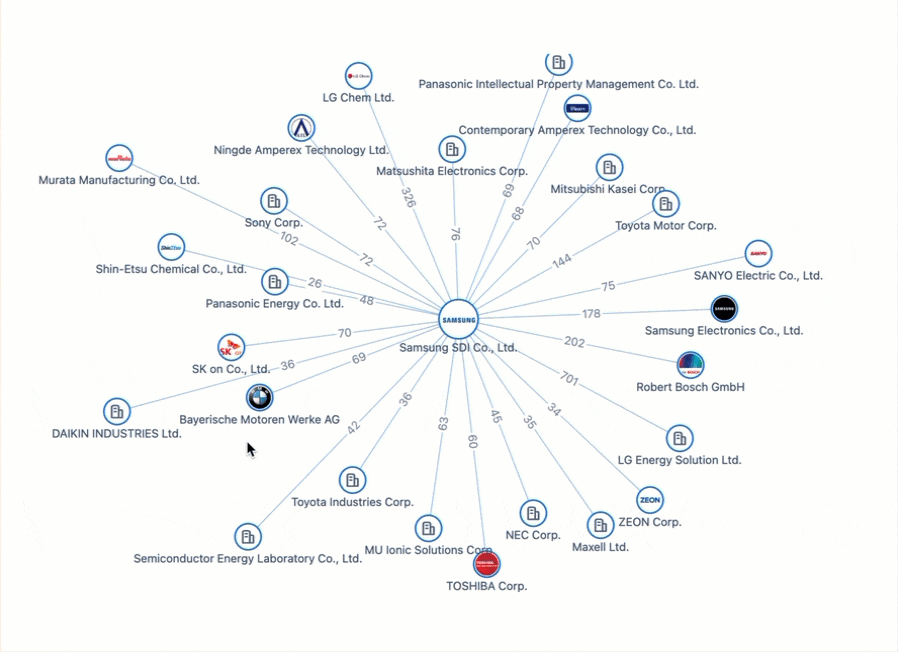IP Experts’ Non-Disclosure Agreement (NDA) Cheat Sheet
Jurgen Vollrath is President of Exponential Technology Counsel. He’s also a PatSnap customer, so we had the pleasure of getting his thoughts on the tricky subject of using non-disclosure agreements to protect intellectual property.
Exponential Technology Counsel
Turns out many innovators are getting shafted due to their poor grasp of the subject—but Jurgen has some advice that’ll turn that around. Enjoy.
Jurgen Vollrath, President of Exponential Technology Counsel, on NDAs
I recently took part in a user group discussion on LinkedIn. This prompted me to devote a podcast to the subject of non-disclosure agreements (NDAs).
The comments that were posted re-affirmed that NDAs remain the most misused agreements (talk about the blind leading the blind).
For example, the range of comments included statements like:
- “Get a patent because companies generally won’t sign your NDA anyway.”
- “No, a patent is a waste of money—use an NDA.”
- “Not everyone is out to steal your invention, so go ahead and discuss the idea with the proposed manufacturer.”
- “If you have a patent you don’t need an NDA.”
- “If you have an NDA you don’t need a patent.”
Before I say anything else, let me say one thing unequivocally:
If you are planning on disclosing your confidential information to someone, have them sign an NDA.
Not maybe. Not sometimes. But every time. It doesn’t matter whether you use your own NDA or the other side insists on using its standard form—make sure you read it over first though.
Here’s why:
- It’s a “belts and suspenders approach”—two-way protection—if used after you’ve already filed a patent application
- It preserves your patent rights if you disclose information prior to filing a patent application
Usually, I advise start-ups to have both a patent application and an NDA in place when it comes to disclosing to a high risk recipient.
Norton Rose Fullbright notes the importance of combining NDAs with patents—this can be particularly effective when operating in the fuzzy area of software-related intellectual property.
PatSnap note
Risk tiers when it comes to disclosure of business-sensitive information
Low Risk
- Investors
- Patent trolls
- US or EU suppliers
High Risk
- China/India Supplier
- Competitors
Investors have little interest in stealing your technology—their only concern is assessing whether investing will make or lose them money. If you’re talking to investors, either a patent application or an NDA will suffice.

The same holds true for patent trolls (non-practicing entities or NPEs). They’re focused on deciding whether your technology fits within their portfolio and at what price they can get it. Since (by definition) patent trolls don’t produce anything, they will not be competing with you—as far as outdoing or stealing your innovation is concerned.
When it comes to suppliers, the question is,“What will I do if the supplier starts manufacturing the product, for itself or someone else, without my permission?” Typically, a supplier just wants more customers and won’t alienate its customer base by stealing technology from it. However, foreign companies may have undefined affiliates that could end up becoming competitors. So, here’s my rule of thumb.
If the supplier or manufacturer is in a jurisdiction with a well-developed legal system, where I can enforce my rights (e.g. US or Europe), the risk is negligible and I would treat them like any other low-risk entity. If the supplier is in a country where the legal system is questionable or still evolving, I would firstly get references. Then I would disclose information only after I’ve filed a patent application and had the supplier sign an NDA. Also, I would multi-source—avoid disclosing all your ideas to one entity, so try having different suppliers for different parts.
The China Law Blog stresses the importance of establishing an NDA before any discussions happen and taking special precautions when entering the Chinese market. A belated or poorly structured NDA can be worse than having no protection at all.
PatSnap note
The other high risk group is, obviously, your competitors. Any negotiations—be they for a license, joint venture or acquisition—should follow both an NDA and patent application.
Now that you know who you’re dealing with, the next question is, “What are the most important elements of NDA?”
There’s no such thing as a single NDA—each company seems to use its own format, so we need to understand potential pitfalls.
Elements of an NDA
-
One-way or two-way
The choice between one-way or two-way NDA is self-explanatory—will confidential information be divulged by only one party or by both
-
Definition of confidential information
This covers the definition of what is to be kept confidential—includes the material that you will be disclosing (described in broad terms to give it a label) and may include the fact that you are entering confidential discussions. As well as prohibiting the recipient from disclosing any confidential information it receives, the NDA should also make it clear that the recipient may not use the information for any purpose other than the intended one (covered in “point c” below).
-
Purpose of the disclosure
The purpose relates to the “why” of the discussion—i.e. why are you disclosing the information? Typically, it’s to allow the other side to evaluate the material and determine whether to enter a longer-term relationship.
-
Timeline
Often, the timeline is only partially addressed. There should be a duration for the contract as well as a duration for the confidentiality. For how long will any disclosure between the parties be subject to the NDA? For how long must the recipient keep the information confidential, once it has been disclosed?
There’s a subtle but vital difference—one question addresses which conversations are kept confidential, the other addresses for how long those conversations are kept confidential.
-
Nature of the disclosed information
A clause commonly included in an NDA is that any confidential information in written form should be marked “Confidential”—and if this information is disclosed verbally, it should be accompanied by a written copy marked “Confidential”, which must be submitted within a specified period.
-
The recipient
Make sure you’re disclosing to the company signing the NDA. If you’re dealing with a large entity that includes a parent company and multiple subsidiaries, the NDA should be signed by the parent or subsidiary receiving the confidential information.
-
Residual clause
A residual clause basically says, “Even though we won’t use your confidential information directly by making copies of it or memorizing it, you cannot treat the people who were exposed to the information as being somehow permanently infected and thus precluded from working on similar projects in the future.” It’s an attempt by the recipient to water down the effect of the NDA.
If faced with a situation like this, make sure the clause isn’t written too broadly, file a patent before disclosing, and (preferably) hold back some information so the recipient doesn’t have all the pieces of the puzzle.
How should you deal with third parties from now on?
Disclose your information using a two-step process.
Step 1: Disclose only high-level benefits (specifications), as these often don’t need an NDA.
Step 2: Disclose confidential information, following this sequence:
- Determine the risk
- File a patent application, if appropriate
- Keep certain trade secrets to yourself
Follow these rules and you will reduce your headaches down the line—much better than Advil or Ibuprofen!
Learn more on our webinar
Watch here: Why your company is using NDAs all wrong.
Your recommended content
-

Patsnap Surpasses US$100 Million in Annual Recurring Revenue
Category: Article | Category: News/PR
Wednesday, June 12, 2024
Patsnap has reached a significant milestone of achieving $100M in Annual Recurring Revenue (ARR), marking an impressive 20% year-over-year growth in 2023. This milestone highlights the massive and meaningful value our platform brings to over 12,000 IP and R&D teams across 50 countries, driving efficiency, productivity, and collaboration.
-

Introducing Hiro, an AI assistant built for IP and R&D workflows
Category: AI advancements | Category: AI development | Category: AI-tools | Category: Article | Category: artificial intelligence
Tuesday, May 14, 2024
Powered by Patsnap’s industry-specific LLM, Hiro is designed to streamline IP and R&D workflows from ideation to product launch. With its robust AI capabilities, Hiro brings a new level of efficiency, precision, and security to tasks that were once time-consuming and labor-intensive.What sets Hiro apart is that it draws from our large language model that’s been trained on market-leading patent records, academic papers, and proprietary innovation data. This ensures we deliver more accurate and reliable results for every prompt.
-

Powering the Future of Electric Vehicles: The Battle for Battery Innovation and Patents
Category: Article | Category: battery technology | Category: electric vehicle | Category: EV | Category: lithium ion | Category: lithium ion battery | Category: NEV | Category: new energy vehicles
Monday, April 22, 2024
In the ever-evolving landscape of innovation, the electric vehicle (EV) industry stands as a beacon of technological transformation. As we explore the patents propelling the EV revolution, Apple's venture serves as a poignant example of the challenges even industry giants face in this competitive arena. Join us on a journey through the global patent landscape, where the quest for superior power solutions unfolds, and where the true pioneers of the EV revolution are making their mark.